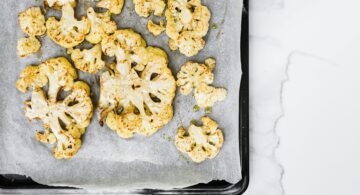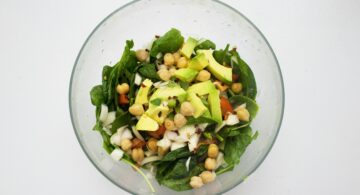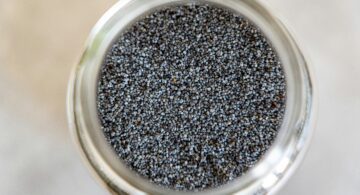5 Saffron Health Benefits
Saffron may well be the most expensive spice on earth, fetching as much as $150 per ounce. And in case you’re doing the math, that’s about $4.8 million per ton!
Why so costly? The source of this exotic spice is the stigmas of a crocus flower that blooms once a year for only a few days. Each flower must be picked and its three fragile stigmas removed from the center of its petals by hand—a very tedious process. It takes about 4,500 crocus blossoms to yield that precious ounce of spice.[1]
Unlike most crocuses that we grow in the US, the saffron crocus (Crocus sativus) blooms in the fall. The flower is a petite, lavender bloom with six petals. Nestled inside this delicate blossom are three burnt-orange stigmas (the female part of the flower) that bare its delicious flavor and pleasant aroma.[2]
Saffron has been cultivated for millennia. Though widely grown and used the world over today, saffron originated in Southern Europe and Southwest Asia. And while we know saffron best for its culinary delights, saffron also offers a rich, orange-yellow dye that you’d recognize in the robes of Buddhist monks.[3]
But in ages past, saffron’s health benefits and medicinal applications have overshadowed all of its other uses. References to saffron as medicine date back to Hippocrates.[4]Saffron has enjoyed the status of wonder herb treating a wide variety of ailments including:[5]
| ● Asthma | ● Infertility | ● Insomnia |
| ● Cancer | ● Baldness | ● Intestinal gas |
| ● Depression | ● Alzheimer’s | ● Shock |
| ● Pain | ● Heartburn | ● Dry skin |
| ● Premenstrual cramping | ● Cough and whooping cough | ● Hardening of the arteries |
As with many other remedies of this nature, we encounter a blend of folklore and modern science. Specific studies on saffron are out there, but not like one would expect from the development of a drug. Pharmaceutical companies who stand to profit from the studies fund most major medical research.
So when it comes to natural spices, herbs and their like, research is limited to universities and mostly nonprofit groups who simply have a desire to learn and share their findings with others. As a result, the studies tend to be small and are often dismissed by the medical community at large. But with money as the primary motivator for the big drug studies, I think we have more reason to be cynical of them than of these smaller studies.
Health Benefits of Saffron
Saffron can thank its medicinal properties to: vitamins A, C, many of the B vitamins, the flavonoid crocin, the glycoside picrocrocin, safranal, carotenoids, antioxidants, and a wide variety of minerals, manganese being the most prominent among them.[6],[7]These components lend saffron numerous properties as an antioxidant, antidepressant, anticancer, antispasmodic, antiseptic, and anticonvulsant.[8]
Actual studies on saffron have revealed a number of striking health benefits:
1. Inhibits and/or retards the growth of cancer cells.
Researchers believe that the carotenoids in saffron are toxic to cancer cells.[9][10]
Saffron does not have this effect on the healthy cells.[11]
2. Fights the effects of Alzheimer’s.
Saffron reverses aluminum toxicity, memory loss and neurological disorders associated with Alzheimer’sand dementia.[12][13]A double-blind, placebo-controlled study indicates that saffron may be a safe and effective treatment for mild to moderate Alzheimer’s.[14]
3. Helps alleviate depression and premenstrual syndrome.
The great health benefit of saffron over antidepressant drugs is that there are no known long-term side-effects or addictions associated with saffron.[15][16][17]This spice also helps relieve pain and bleeding during the menstrual cycle.[18]
4. Prevents macular degeneration.
At universities in Italy and Australia, scientists found that saffron may not only protect the eyes, but may also slow and reverse eye diseases such as age-related macular degeneration (AMD) and retinitis pigmentosa.[19]Clinical trials on patients with AMD, involving a double-blind, placebo-controlled approach resulted in the vision improvement of 23 out of 25 patients. Patients received a daily oral dose of 20 mg of saffron.[20]
5. Promotes weight loss.
A study published in 2010 demonstrated that supplementing with saffron helped mildly overweight women decrease their snacking and reduce their weight significantly compared with those who merely took a placebo.[21]If one health benefit of saffron is curbing the appetite, then that’s good enough for me!
How to Purchase and Administer Saffron
Due to its high value, hucksters often try to pass off a lesser spice as saffron, or they lace saffron with other herbs. So always purchase saffron from a trusted source. Very little is needed when cooking!
As a supplement, various trials have set the daily dosage of 20 mg of saffron or saffron extract, or 30 mg per day divided into two doses.[22]Those doses apparently work for most applications. A dosage up to 1.5 grams per day is thought to be safe, but begins to be toxic at 5 grams and 12-20 grams can be deadly.[23]
To take saffron, either purchase a supplement that contains saffron extract, or make a tea or milk beverage with ten strands of saffron, or simply spice your food with it.[24]
Recipe for Easy Paella
Ingredients
- 2 pounds skinless, boneless chicken breasts cut into 2 inch pieces
- 1 pound chorizo sausage, casings removed and crumbled
- 1 pound shrimp, peeled and deveined
- 2 cups uncooked short-grain white rice
- 1 quart chicken stock
- 1 Spanish onion, chopped
- 1 red bell pepper, coarsely chopped
- 3 cloves garlic, crushed
- 2 lemons, zested
- 6 tablespoons olive oil, divided
- 1 tablespoon paprika
- 2 teaspoons dried oregano
- Salt and black pepper to taste
- 1 teaspoon crushed red pepper flakes
- 1 bay leaf
- ½ bunch Italian flat leaf parsley, chopped
- 1 pinch saffron threads
Directions
- In a medium bowl, mix together 2 tablespoons olive oil, paprika, oregano, salt and pepper. Stir in chicken pieces to coat. Cover, and refrigerate.
- Heat 2 tablespoons olive oil in a large skillet or paella pan over medium heat. Stir in garlic, red pepper flakes, and rice. Cook, stirring to coat rice with oil for about 3 minutes. Stir in saffron threads, bay leaf, parsley, chicken stock, and lemon zest. Bring to a boil, cover, and reduce heat to medium low. Simmer 20 minutes.
- Meanwhile, heat 2 tablespoons olive oil in a separate skillet over medium heat. Stir in marinated chicken and onion; cook 5 minutes. Stir in bell pepper and sausage; cook 5 minutes. Stir in shrimp; cook, turning the shrimp, until both sides are pink.
- Spread rice mixture onto a serving tray. Top with meat and seafood mixture.
As you might guess from reading that recipe [25], very little saffron goes a long way! A little saffron may go a long way toward improving your health as well.
Clearly there is something magical about the spice saffron. If its striking beauty does not immediately cast a spell, often it simply takes experiencing the many health benefits of this spice to fall into full enchantment with it. It’s uniqueness can promote weight loss, alleviate depression,slow the progression of Alzheimer’s disease and reduce cancer risk. Eating saffron also appears to help vision by retarding the degeneration of the retina that occurs with age.
How will you incorporate the many health benefits of this golden herb into your health regimen and fight disease?
Sources:
[1]Food Facts, “What Is Saffron Good for?” Mercola.com, nd, http://foodfacts.mercola.com/saffron.html.
[2]White Flower Farm, “Growing and Harvesting Saffron Crocus,” nd, http://www.whiteflowerfarm.com/harvesting-saffron-crocus.html.
[3]Safranor, “Benefits of Saffron,” nd, http://www.safrandugatinais.fr/en/vertus.htm.
[4]Food Facts.
[5]WebMD, “Saffron,” nd, http://www.webmd.com/vitamins-supplements/ingredientmono-844-saffron.aspx?activeingredientid=844&activeingredientname=saffron.
[6]Tara Carson, “Saffron Health Benefits,” Live Strong, December 18, 2013, http://www.livestrong.com/article/338605-saffron-health-benefits/.
[7]Food Facts.
[8]Nutrition and You, “Saffron Nutrition Facts,” nd, http://www.nutrition-and-you.com/saffron.html.
[9]Food Facts.
[10]Herbwisdom.com, “Saffron,” nd, http://www.herbwisdom.com/herb-saffron.html.
[11]Tara Carson.
[12]Tara Carson.
[13]Food Facts.
[14]Akhondzadeh, S. et al, “Saffron in the Treatment of Patients with Mild to Moderate Alzheimer’s Disease: a 16-Week, Randomized and Placebo-controlled Trial,” PubMed.gov, October 2010, http://www.ncbi.nlm.nih.gov/pubmed/20831681.
[15]Drugs.com, “Saffron,” nd, http://www.drugs.com/npp/saffron.html.
[16]Herbwisdom.com.
[17]Tara Carson.
[18]Herbwisdom.com.
[19]News Medical.net, “Saffron Could Stop Blindness and Cure Eye Disease,” May 17, 2009, http://www.news-medical.net/news/2009/05/17/Saffron-could-stopping-blindness-and-cure-eye-disease.aspx.
[20]PF Louis, “Saffron Cures Macular Degeneration,” Natural News, February 19, 2013, http://www.naturalnews.com/039150_saffron_macular_degeneration_cure.html.
[21]Cathy Wong, ND, “Health Benefits of Saffron Extract,” Alternative Medicine, January 6, 2015, http://altmedicine.about.com/od/herbsupplementguide/a/Saffron-Extract.htm.
[22]Drugs.com.
[23]WebMD.
[24]Herbwisdom.com.
[25]All Recipes.com, “Easy Paella,” http://allrecipes.com/Recipe/Easy-Paella/Detail.aspx?evt19=1&referringHubId=1151.


















